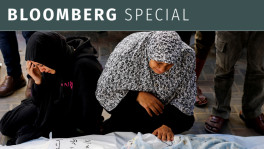When Chinese food is not Chinese
The Chinese chefs in Dhaka would make their own noodles, the market did not have any instant noodles as it does these days

Sweet, sour, salty, and tinged with red chilli, Chinese dishes are the ultimate comfort food.
You can never say no to chunks of deep fried proteins in thick, heavy sauces with caramelised vegetables and a side of fried rice.
An evening out with family becomes complete with a big bowl of steaming hot Thai soup with its distinctive flavour of lemongrass and white vinegar.
As delicious as we find Bangla Chinese, it hardly resembles authentic Chinese cuisine.
The recipes, cooking methods and ingredients are also miles apart.
The beauty of Chinese food is that just like burger or pizza, you would find it in almost every part of the world.
However, these local versions are quite different from the original ones.
The Bangla Chinese we usually eat in Dhaka is Cantonese influenced, whereas in India, it is more Hakka influenced.
The American-Chinese dishes contain more "American" flavours.
So if we are just eating local versions (which are spicier, heavier, and greasier) of Chinese food, did authentic Chinese never exist in Dhaka? Of course it did, that is how it came into our lives in the first place.
The Chinese who came to Bengal were mainly involved in dentistry, laundry and food business.
Through their food business, Chinese dishes entered our menu.
We reached out to Chef, Researcher and Author Shawkat Osman, who shared with us how Bangla Chinese came into existence in the country.

"Café China was Dhaka's first Chinese restaurant, it was in Shegunbagicha. A Chinese couple opened it in the 1960s. It operated on a small scale, and there were not a lot of enthusiastic eaters who went there. There was the whole prejudice of eating weird 'Chinese' food. Another restaurant was there in Gulistan which had a Chinese chef, it was called Chu Chin Chow. Chinese restaurants during that time had simple, sturdy furniture with maybe just an A/C, they were not extravagant."
"Bong Chinese did not have any pork or pork fat, and the Chinese chefs added spices and other condiments to make it more palatable for Bangladeshis. They gave Thai soup its pink colour. They chose those things that the locals would like. This was done everywhere, in India the Chinese food has 'masala' and is spicier," he said.
The Chinese chefs in Dhaka would make their own noodles, the market did not have any instant noodles as it does these days.
Soy sauce was probably imported or its raw materials were imported and then it was fully prepared in the restaurant kitchens.
"As time passed, the Chinese restaurants began to vanish. By the 1980s, with the boom in real estate price, when shop rents became sky high, most of the Chinese left Dhaka. At the moment, the Cheong Shing restaurant in Banani probably sells some authentic Chinese dishes," explained Shawkat Osman.
"Bangla Chinese is more about cornflour, tasting salt and stock. You mix a bit of cornflour in water and make what we call a 'slurry', toss in some fried vegetables, onions and capsicums along with prawn, chicken or beef, and it is done!" he added.
Researcher and journalist Afsan Chowdhury shared with us his experience of tasting authentic Chinese. "The real Chinese dishes are very different from Bangla Chinese or any other local versions. The soup is thinner, the meat is usually sliced and the rice is eaten separately, not the way we eat fried rice in Bangladesh. There are also many varieties of noodles and the chicken usually comes in two ways, white or brown. The Chinese also like to munch on snacks like nuts or cucumbers before having a meal."

Local adaptation of Chinese dishes is also extremely popular in neighbouring India.
"Wherever settlers went, they took along their cuisine. The local adaptations of these dishes were different for obvious reasons like lack of ingredients. Chinese staples such as five spice powder and Shaoxing wine (a kind of Chinese rice wine) had to be substituted with local ingredients," said Kaniska Chakraborty, independent brand and communication consultant and food blogger.
The Indo-China war drove out most of the Chinese residents from India. Son of a Chinese immigrant, Nelson Wang, came to Bombay and realised that people there liked spicy and heavy dishes.
And he discovered Chicken Manchurian, a local dish transformed with cornstarch and soy sauce.

"The Chinese in Kolkata consists of local fishes like 'bhetki' and river prawns, which are absent in authentic Chinese dishes. In China, they use a lot of potatoes, but we do not. Here we also prefer rice over noodles. Instead of tofu, we use paneer," said Kaniska.
In China, flash frying in large, extremely hot woks is a common cooking method, but in India as well as Bangladesh, we like to simmer the food for a long time. We also use a lot of tomatoes, capsicum and red chilli, he shared.
According to the food enthusiast, Bangla Chinese in Dhaka is very different form Indian Chinese. "We do not have Thai soup in Kolkata, and there is a lot more chicken and beef in Dhakaiyya Chinese. In Kolkata, we see a lot of chicken and prawn, very little pork and almost no beef. I think the sauces are also different."


 Keep updated, follow The Business Standard's Google news channel
Keep updated, follow The Business Standard's Google news channel
















